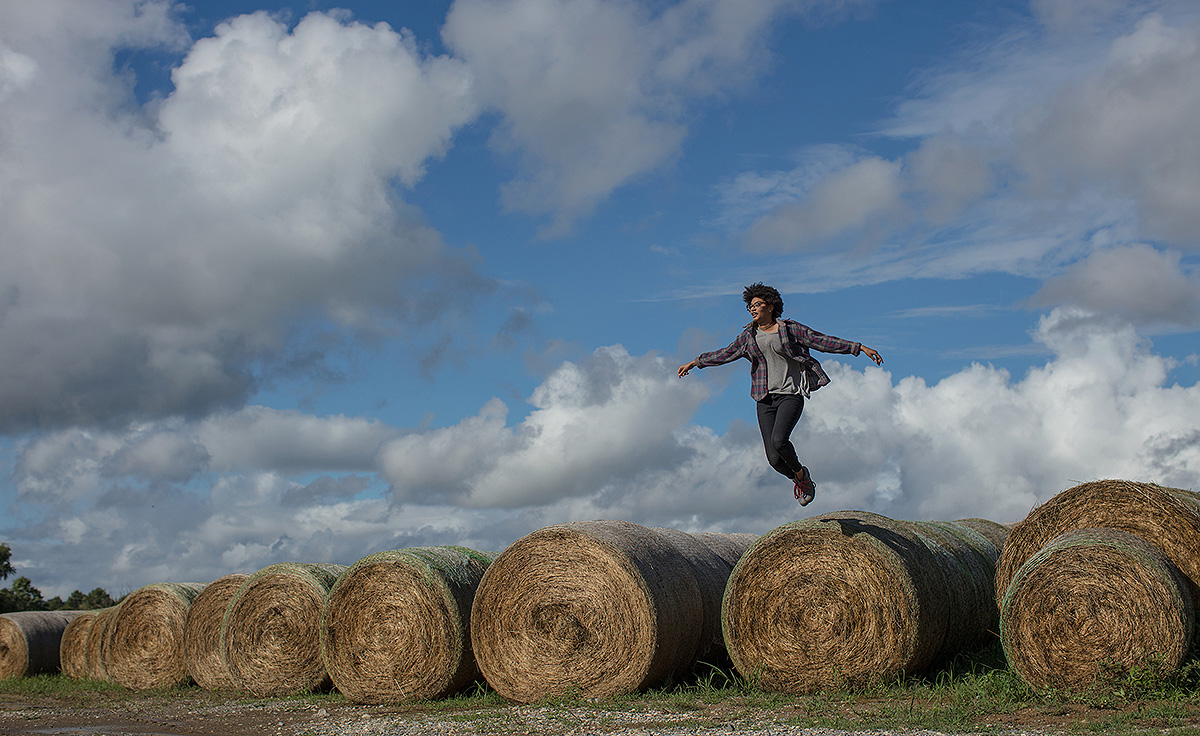To connect with your customers and spread your message, you need to tell your brand story. Essential components of your brand and marketing strategy, brand story, and brand storytelling are the use of narrative to connect your brand to consumers through shared values.
The use of a story captures the audience’s attention and leads to memorable brands more than statistics or facts alone.
In this post, I’ll provide a comprehensive overview of brand story and brand storytelling. Continue reading to learn:
- What a brand story is
- Elements of a brand story
- Why your brand story is important
- Questions to ask when creating your brand story
- How to write a brand story
- The difference between brand story, brand storytelling, and brand narrative
- The hero’s journey in brand storytelling
- Brand storytelling tips
- Examples of brand stories
What Is A Brand Story?
A brand story is the use of narrative to connect your brand to consumers by linking shared values or character traits. It’s interweaving the narrative of your brand’s history, purpose, values, and cultures with the customer’s journey.
Questions about the customer’s journey to consider include:
- Who are they?
- What problems do they face?
- How do they use your products or services to find a solution?
Your brand’s story is the culmination of facts, feelings, and interpretations that determine your narrative. As with everything in business and branding, authenticity reigns supreme. Your brand story should be a genuine representation of your organization to create an emotional connection and build brand loyalty.

The Three Components Of A Brand’s Story
Your brand story encapsulates what you stand for and why you do what you do. There are three core components of your brand story:
- What you do
- How you do it
- Why you do it
You may notice these components closely coincide with the previously mentioned questions about the customer’s journey. That’s how you form the connection; your narrative mirrors their experiences and needs.
Simon Sinek – an author and inspirational speaker on learning and development for businesses – has a famous quote: “People don’t buy what you do; they buy why you do it.” That’s where your focus lies in building your brand. Your story should explain what you do and how you do it, but center the focus on why you do what you do.
Elements Of A Brand Story
The following elements make up your brand story:
- Character: Your organization/the founders
- Setting: Where your story started
- Conflict: The conflict or problem you set out to overcome
- Rising Action: Steps you took along the way to grow and work towards solving the problem and achieving your goal
- Climax: The peak of the challenge when you find a resolution to the problem
- Transformation: How your brand transformed throughout the journey to become what it is today and where it aims to go moving forward
The Science of Storytelling: Why Is Your Brand Story Important?
Storytelling is scientific. There are numerous reasons – multiple backed by science – why your brand story is important to the overall success of your brand and organization, including:
- Human brains react to narratives
- Attract the right customers
- Differentiate your brand
- Make your brand memorable
- Humanize your brand
- Build brand loyalty and trust
In the subsections below, I’ll expand on each reason in greater detail. Keep reading to learn why your brand story is so important.

Human Brains React To Narratives
The human brain reacts to narratives in a more complex way than statistics or facts alone. It goes back to making connections with customers on an emotional level. If you don’t establish a story and try to sell your brand solely off facts, product features, or other technical information, there’s less of a reason to support your brand over competitors with similar offerings.
Attract The Right Customers
How you position your brand story directly impacts what type of consumers you’ll attract. Shaping your brand story for your defined target audience makes it more likely that you’ll attract the right customers.
By right customers, I mean people who see themselves in your brand identity. Consumers who connect with your story and organization turn into loyal customers.
Differentiate Your Brand
A story allows you to differentiate your brand from others in the market. Highlighting what makes your brand unique or memorable through storytelling helps set you apart from competitors.
Make Your Brand Memorable
In creating a compelling brand story, you capture the attention of consumers better than other forms of marketing and brand strategy. It leads consumers to remember your brand. If your brand is in the back of their mind, when it comes time to make a purchase or support someone in your market, they’ll likely choose you.
Humanize Your Brand
A strong brand story and well-designed brand personality turn your brand or organization into a human-like entity. When consumers connect with humanized brands, they feel like they’re engaging with an actual person on the other side.
Build Brand Loyalty And Trust
All of the previous points lead to this one. Your brand story leads to loyalty once consumers become customers. A genuine, authentic brand story builds trust among customers. When it comes time to support a brand, they’ll lean on someone they can trust.

Creating Your Brand Story
Now that you know why it’s so important, it’s time to create your brand story. Before you can get your story out into the world, you need to plan and brainstorm.
Ask yourself four main questions to form the bulk of information and content to include in your brand story:
- Who are you?
- Who are your customers?
- What issues are your customers trying to solve?
I’ll expand on these questions and help facilitate your thought process in the sub-sections below.
Who Are You?
The first piece of information you need to build your brand story is an understanding of who your company or brand is. This covers everything from the service or solutions you provide to your core values and what you believe in.
Consider the following questions to help understand who you are as a brand:
- Who are you as an organization?
- What do you do as a company?
- What is your company’s purpose?
- What are your company’s values?
Who Are Your Customers?
Once you know your brand, you need to think about who your customers are. If you’ve established a target market or audience, refer to your notes and documentation through that process.
Whether you’ve previously thought about this or not, consider these questions to define your target customers:
- Where are your customers located?
- What other solutions are available to them?
- Why have they chosen to support your brand?

What Issues Are Your Customers Trying To Solve?
With an understanding of your brand and customers, you need to identify the issues your customer is trying to solve. This is the conflict in your brand story.
Consider the following questions when identifying your customers’ pain points:
- What challenges are your customers facing?
- What are they looking for in a brand?
- What is the ideal solution that would lead to a positive brand experience?
- Why are you the best choice?
How Do You Help Your Target Audience?
Forming the conclusion of your story, pinpoint how your brand helps to solve the customer’s issues and transform them. This connects all of the previous dots. It identifies what you do, highlights who your customers are and what they’re trying to solve, and exemplifies how your brand best solves their issues.
While you could ask several questions, a prominent one to consider is:
- How is your brand unique in providing customers with the best solution?
How To Write Your Brand Story
With all the prep work completed and information compiled, you can begin the process of writing your brand story. Every brand is unique and so is each story.
While there’s no one-size-fits-all approach, I’ve compiled a step-by-step approach to writing a brand story:
- Summarize your company history
- State your purpose, values, and culture
- Define what your company does and why you do it
- Establish your goals
- Develop brand attributes
- Write your brand story
Use these steps as guiding points as you write your brand story. In the sections below, I’ll expand on each step in greater detail.

Summarize Your Company History
Begin your brand story with an “about us” style overview of the brand. Include the following details:
- Brand name
- Why you named it that
- When you were established
- How long you’ve been in business
- Who your customers are
- The original and current size of your company
- What you intend to achieve with your brand and why
State Your Purpose, Values, And Culture
With a summarization of your inception and history, dive into the core of your brand. Specifically your purpose, values, and culture – components of your brand that are interwoven throughout your story. They serve as the guidelines or foundation for your entire narrative.
When considering your purpose, ask yourself:
- Why do you do what you do (historical, ethical, etc.)?
- What are you passionate about?
- What are you currently doing and where are you headed?
Your values are the company’s guiding principles.
Culture includes:
- The attributes and characteristics of your company
- How your employees present themselves, specifically how they interact with other employees and customers
- How leadership defines and sets the brand’s culture
Define What Your Company Does And Why You Do It
Although you cover this when considering your purpose, clearly define what your company does and why you do it. Describe the activities and services your company provides.
More importantly, explain what drives you to do what you do. Why does your organization exist? I’ll repeat it until I’m blue in the face, customers relate to the why behind your company. Why do you do what you do?

Establish Your Goals
Presenting your vision for the future informs customers of where you’re going. This is the long-term vision and strategy for your brand moving forward. Establish goals for physical product or service development, overall business initiatives, and expanding or promoting your values.
Develop Brand Attributes
Brand attributes help foster the connection between your brand and consumers. Relating to your brand story, attributes include your messaging, mission statement, and vision.
- Brand messaging: How your messaging and identity support your purpose, values, and culture.
- Mission statement: The statement that describes your purpose and overall international
- Vision: A summarization of your future aspirations and previously established goals.
Write Your Brand Story
Once you have all of the information above, you can write your brand story. Follow the elements of a brand story and craft your narrative in a compelling, relatable way. Though you’re telling your story, make it so consumers can see themselves as the main character in the journey.
Is A Brand Story Different From Brand Storytelling Or A Brand Narrative?
There are a few terms associated with narrative and storytelling as it relates to brands. While they all revolve around telling a story, they serve different purposes.
- Brand story is the narrative of your company’s history, purpose, values, and journey that forms connections with consumers through linked values.
- Brand storytelling is the use of narrative to connect customers to brands. Where brand story is the narrative of your foundation, existence, and purpose, brand storytelling is about using individual stories to connect with customers.
- Think of brand story as an enhanced “about us” while brand storytelling is more of a branding campaign through individual stories.
- Brand narrative is a comprehensive and strategic framework for all brand communications and storytelling, outlining the key elements and messages of a brand.

The Hero’s Journey In Brand Storytelling
When it comes to brand storytelling, the consumer is the main character – or the hero. Brand storytelling utilizes the story structure of The Hero’s Journey.
The Hero’s Journey follows a structure where a main character (hero) goes on a journey to achieve a goal and meets a guide who helps them overcome obstacles and/or fears, before returning transformed. It’s a method used in popular narratives – like Star Wars or The Lion King – and helps tap into consumers’ emotions.
Here is a high-level overview of the hero’s journey as it relates to brand storytelling:
- Who is your hero
- What are their wants and needs
- What’s their problem
- How can your brand guide them to solve it
- What solution are you offering
- What does the transformation look like
Brand Storytelling Tips
Storytelling is an effective way to form emotional connections with consumers. It’s like creating marketing campaigns tailored to buyer personas. Here are a few additional tips for brand storytelling:
- Be consistent
- Authenticity is key
- Create and adhere to brand guidelines
- Lean on emotion
- Use numerous mediums
In the sections below, I’ll provide more detail about each tip.

Be Consistent
When telling stories about your brand, consistency is key. The core identity and personality of your brand should be the same in every story you tell. While you can tailor your message for specific social media platforms or marketing initiatives, the message and values should remain consistent.
Authenticity Is Key
I’ve emphasized this throughout the post – be genuine and authentic. Every story you craft, each detail, and the way you present it needs to be authentic to your brand. Consumers can see right through an imposter. When you’re trying to form genuine connections and build brand loyalty, authenticity is key.
Create And Adhere To Brand Guidelines
Guidelines establish consistency in every component of your organization. From brand style guidelines for consistency in visual branding and marketing content to voice and tone guidelines that inform written copy and storytelling, these guardrails ensure you remain consistent and authentic.
Remember, storytelling isn’t limited to written copy. Visual storytelling involves high-quality branded imagery and video content to spread your brand. No matter the medium, create and adhere to brand guidelines to form stronger connections with your customers.
Lean On Emotion
Emotional connection leads to a memorable brand and loyalty among customers. It’s also the key to a powerful story – brand-relevant or not. When creating stories to spread your brand, you must create an emotional response.
Use Numerous Mediums
There’s an abundance of platforms for your brand to grow on. Don’t limit yourself to one medium. Brand storytelling takes place everywhere from your website to online marketing content, print advertisements, and employer branding.

Brand Story Examples
I’ve covered a lot of information about brand stories. It often helps to see real-world applications of concepts to understand them completely.
Here are a few examples of brand stories from companies you’ll probably recognize:
- Patagonia’s brand story centers on sustainability and commitment to preserving nature and the environment. The company’s founder – Yvon Chouinard – was an avid climber who grew the company from the back of his car to the household name it is today. The company produces a range of outdoor apparel and essentials, focusing on sustainability and environmental protection.
- Toms story is centered around giving back. The foundation of the company is that for every pair of shoes sold, Toms donates a pair of shoes. They also support larger health, education, and community development programs through strategic partnerships.
Tell Your Story Through Your Visual Brand Identity With Casey Templeton Photography
There’s a lot to unpack from this post. At the least, I hope you have a better understanding of what brand story is, the difference between brand story and brand storytelling, and why it’s important to incorporate both within your brand.

Visuals are dominant in today’s modern digital landscape, and it’s important to spread your story through visual marketing and branding. High-quality, professional-grade branded imagery is essential to this.
Casey Templeton Photography offers professional commercial lifestyle and corporate photography services in the greater Nashville, TN area and beyond. Casey has years of technical practice behind the lens and experience in business branding. To learn more about telling your brand story through visuals, or to get started on a project, fill out our contact form.
